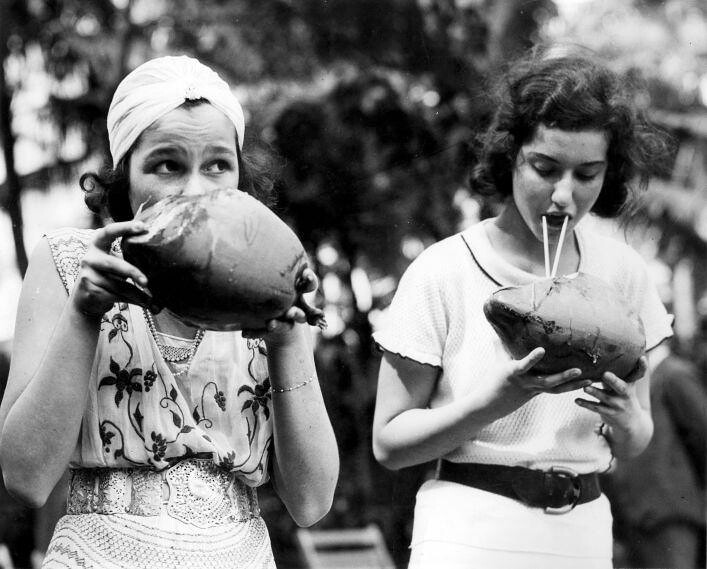The year I turned 30 was a pivotal turning point in my life. It may sound cliche but it really was. My life view shifted in a major way that year. So I thought it would be interesting, as an exercise, to use the list to reflect on the year I turned 30 and see what new personal insights I've garnered in the last few years since then.
15 things that I should have HAD by age 30
"One old boyfriend you can imagine going back to and one who reminds you of how far you’ve come."
I'm not sure why I would want to go back to any of my old boyfriends because every single one of those relationships reminds me of how far I've come.
"A decent piece of furniture not previously owned by anyone else in your family."
At 30, none of the furniture in my apartment was previously owned by anyone in my family. Ironically, since then I've either sold these items or given them to friends and family to store or use because of my desire to simplify my life.
"Something perfect to wear if the employer or man of your dreams wants to see you in an hour."
Well, considering I've taken myself out of the proverbial rat race and already in partnership with the man of my dreams who loves me no matter what I look like, I would say that, yes, I've always got the perfect thing to wear.
"A purse, a suitcase, and an umbrella you’re not ashamed to be seen carrying."
At 30, I would have said that I absolutely owned a purse, a suitcase and an umbrella that I would be proud to be seen in public with. Since then, I've really tried to let go of letting "things" define who I am. And it's been a process to do this. A process that continues. But I think I can say that I've stripped myself of a lot of that insecurity. All that said, I still have a purse, a suitcase and an umbrella that I'm not ashamed of being seen carrying.
"A youth you’re content to move beyond."
How can I move beyond my youth when I'm still in it? You're only as young as you feel, right?
"A past juicy enough that you’re looking forward to retelling it in your old age."
Check. No comment.
"The realization that you are actually going to have an old age -- and some money set aside to help fund it."
Working on it.
"An email address, a voice mailbox, and a bank account -- all of which nobody has access to but you."
Check, check and check. Gold star for this one.
"A résumé that is not even the slightest bit padded."
I have it somewhere. I haven't used it in a while.
"One friend who always makes you laugh and one who lets you cry."
Yes. I feel very grateful for them.
"A set of screwdrivers, a cordless drill, and a black lace bra."
My screwdrivers are in storage. I never owned a cordless drill. But I always pack my black lace bra.
"Something ridiculously expensive that you bought for yourself, just because you deserve it."
Do plane tickets count?
"The belief that you deserve it."
Amen!
"A skin-care regimen, an exercise routine, and a plan for dealing with those few other facets of life that don’t get better after 30."
I was very reckless with my skin and body through my teens and 20s. Luckily my young body was incredibly resilient. I have definitely become more conscientious about the care of my skin, my physical body, and health and wellness in general. In my 30s, I am more loving and respectful of my body. I find myself really tuning into my body and listening to it. Like when it's tired, it's time to rest it. If it's hungry, it's time to feed it. If it's not really hungry, don't put food in it for no reason. I make sure I move my body regularly. And my body is thanking me for all the care I give it. I feel healthy and strong. If I had to choose between my 20-year-old body and my 30-year-old body, I'd take my older body any day.
"A solid start on a satisfying career, a satisfying relationship, and all those other facets of life that do get better."
At 30, I gave up my career because what once was satisfying was no longer so. At 30, I entered into what continues to be a very loving and satisfying relationship. 30 was when I began to realize that it was up to me to make life better.
15 things I should have KNOWN by age 30
"How to fall in love without losing yourself."
I'm always losing myself somewhere. But I always find myself again. More of myself. Anyone who thinks that by a certain age they've got themselves all figured out is delusional.
"How you feel about having kids."
Check. I know how I feel about having them.
"How to quit a job, break up with a man, and confront a friend without ruining the friendship."
Check, check, and check!
"When to try harder and when to walk away."
I think I'm still working on this one. Aren't we all?
"How to kiss in a way that communicates perfectly what you would and wouldn’t like to happen next."
I think so but I'll have to ask my partner.
"The names of the secretary of state, your great-grandmothers, and the best tailor in town."
I'm not American but I still know who the U.S. secretary of state is. My country does not have one (anymore). Shamefully, I don't even know the names of all my grandparents. I should ask my parents. Best tailor in town? That's a hard one to keep track of when you move towns as often as I do.
"How to live alone, even if you don’t like to."
Check. I like it sometimes.
"Where to go -- be it your best friend’s kitchen table or a yoga mat -- when your soul needs soothing."
I've always known where to go.
"That you can’t change the length of your legs, the width of your hips, or the nature of your parents."
Really?
"That your childhood may not have been perfect, but it’s over."
Thank god.
"What you would and wouldn’t do for money or love."
For sure.
"That nobody gets away with smoking, drinking, doing drugs, or not flossing for very long."
I really only started flossing in my 30s.
"Who you can trust, who you can’t, and why you shouldn’t take it personally."
Working on it.
"Not to apologize for something that isn’t your fault."
Yes but more importantly to always apologize when it is.
"Why they say life begins at 30."
Moving into a new decade, for me, feels like moving into a new home. A new way of being. A new way of being Me. It took me a full day to settle into turning 30. I panicked the day of and then woke up the next day realizing that I am exactly the same person as I was a couple of days before when my age was the number 29. As months went on, and I was 30 for a little longer, I discovered that I was actually really comfortable with myself. With my body. With the person I'd become. It felt good. But I also knew that self-discovery did not end at 30. I knew that there would be constant learning and growing and becoming. At 30, I realized I didn't have all the answers and I was grateful that I could let that part of my ego go.
Does life begin at 30? If the story of my life fit into the pages of a book, a new chapter began the year I turned 30. Cliche, maybe. But true. I think the chapter's called "When I Discovered I Wasn't Who I Thought I Was". In order to get to this point in the book, one would need to read the chapters prior to this one in order to understand the whole story. So it's not the beginning. And it's definitely not the end. The journey continues....
Does life begin at 30? If the story of my life fit into the pages of a book, a new chapter began the year I turned 30. Cliche, maybe. But true. I think the chapter's called "When I Discovered I Wasn't Who I Thought I Was". In order to get to this point in the book, one would need to read the chapters prior to this one in order to understand the whole story. So it's not the beginning. And it's definitely not the end. The journey continues....















